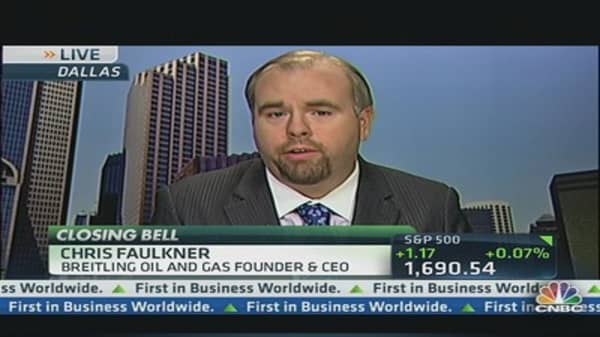The price of U.S. crude may have caught up with North Sea Brent oil prices in the past week, but now looks overvalued and faces a sharp pull back of up to 35 percent, says one analyst.
West Texas Intermediate (WTI) has risen about 16 percent this year to 16-month highs last week on strong demand from refiners, optimism about the U.S. economy and efforts to drain a supply glut at the WTI storage hub of Cushing, Oklahoma. Brent crude has declined 3 percent this year, by comparison.
WTI traded at about $107 a barrel at mid-afternoon in Asia on Tuesday, while Brent was at $108.38. It briefly traded at a premium to Brent on Friday for the first time in almost three years.
David Lennox, resource analyst at Australian trading firm Fat Prophets, said the price of WTI is set to correct by as much as 35 percent from current levels by the end of the year as investors realize that U.S. demand levels are not as strong as originally thought.
"The WTI price should be south of where it is now," he said. "We think it should be around $70 to $95, so we are in line for a reasonable correction by the end of the year if demand continues to be muted."
"Certainly if we saw things calm down in the Middle East that could be a further downward trigger, or if U.S. demand turns out to not be as strong as the current WTI price is making it seem," he added. Political turbulence in Egypt has helped boost oil prices in recent weeks.
(Read More: Don't mess with West Texas: US oil to keep outpacing Brent)





